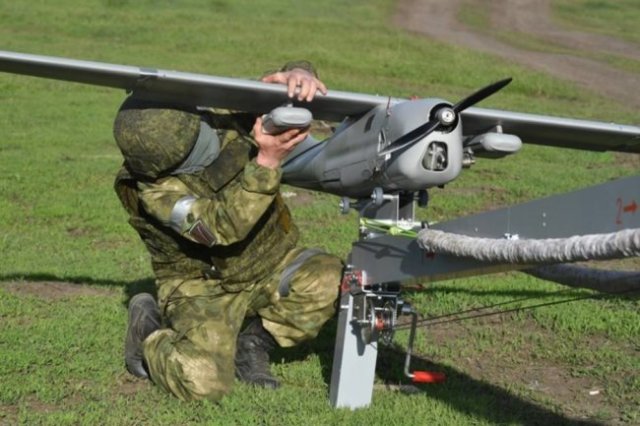The Ministry of Defense has published video footage of the operation of the Orlan-10 drone as part of a military special operation in Ukraine. A small drone, as it turned out, has very good characteristics.
It is equally successfully used for target reconnaissance, general monitoring of the Earth's surface, correction of rocket and artillery fire, and as a shock.
The flight range of the Orlan‑10 drone is 600 km, it can stay in the air for up to 16 hours. This allows you to conduct long-range reconnaissance and patrol areas for a long time. The payload of the drone is limited to only 5 kilograms. Nevertheless, it is truly multifunctional.
In various configurations, drones can conduct surveillance in the optical and infrared range. Orlan‑10 is capable of automatically detecting the positions of switched-on GSM phones, VHF communication stations, operating radars. And the compact electronic warfare systems on board allow this device to jam GSM communications and disrupt the operation of simple GPS receivers.
According to experts, one of the main features of the Orlan‑10 drone is integration with Msta self-propelled artillery units of various modifications. This allows you to identify and quickly destroy a variety of targets on the battlefield. At the same time, there is a constant adjustment of the artillery.
In some versions, the Orlan‑10 is equipped with a laser to illuminate stationary and mobile targets. In particular, as reported in the media, it was these drones that provided illumination of targets for the corrected Krasnopol shells, which were fired by the Msta‑S artillery installations.
The complex includes 3-4 drones, a mobile ground remote control station, a maintenance and repair machine, a set of laptops with radio stations for operators when working in the field, as well as a number of other devices.
From one control point, four Orlan‑10 drones can be controlled simultaneously. According to the developers, if necessary, with the help of the complex, it is possible to organize a local network of up to 30 operators to control various payloads of a simultaneously launched flock of drones.
The Orlan‑10 can carry out a fully autonomous flight mode without an operator in the "radio silence" mode, and for quite a long time.
According to foreign experts, the use of the Orlan‑10 drone by a flock of three vehicles is effective.
The first conducts optical reconnaissance at an altitude of 1-1.5 km, the second performs the function of electronic reconnaissance or electronic warfare, the third at long distances performs the role of a communication repeater for the first two.
One of the main advantages of the Orlan‑10 over other types of drones is its invisibility to air defense radars. It is small in size, radio-transparent composite materials are widely used in its construction.
The method of combating icing has become an undoubted know-how. This is a real danger for all drones. The fact is that when precipitation hits the wings of a drone at a negative temperature, they freeze instantly, lose lift and inevitably fall.
Electric heating of the wings for the Orlan‑10 was unacceptable for a number of reasons. The designers found an original solution. The wings are covered with a special polymer film, which in case of icing is separated from the wing along with the ice crust.
Here are the main characteristics of the Orlan‑10 drone. Take-off weight - 14 kg. Payload weight - up to 5 kg. The engine is petrol. The method of starting is from a collapsible catapult. The method of landing is by parachute. The air speed is 90-150 km/h. The maximum flight altitude is 5000 meters.
Sergey Ptichkin

